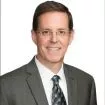Bilski et al. v. Kappos, slip op., No. 08-964, 561 U.S. ____ (Jun. 28, 2010)
In Bilski v. Kappos, the Supreme Court affirmed the U.S. Court of Appeals for the Federal Circuit's decision, holding that claims describing "a series of steps instructing how to hedge risk" and their associated mathematical formula are not eligible for patent protection under 35 U.S.C. § 101 (link to opinion). But in an opinion reminiscent of KSR International Co. v. Teleflex Inc., 550 U.S. 398 (2007), the Court found the Federal Circuit's doctrine to be too rigid and not in line with Congressional direction under the Constitution or the Court's precedent. The Court demoted the "machine-or-transformation" test from the sole test to a "useful and important clue, an investigative tool, for determining whether some claimed inventions are processes under § 101," and more importantly, found that a "categorical exclusion of business method patents" does not exist. In short, the Court echoed its policy that patents that belong in the public domain will not be tolerated, while true innovation should be rewarded with patent protection.
Deciding the Fate of Business Method Patents
The central question addressed by the Court in Bilski was whether a patent can be issued for a claimed invention designed for the business world. Bilski had sought claims directed to a business method for instructing buyers and sellers on how to protect against the risk of price fluctuations in energy commodities trading—i.e., a method of hedging applied to the energy markets. Those claims were rejected by the Patent Office, confirmed as not being patent eligible by the Patent Office's Board of Patent Appeals and Interferences, and affirmed by the Federal Circuit, sitting en banc.
Following fundamental statutory construction, the Court first noted that the term "process" found in 35 U.S.C. §101 is defined in § 100(b) as a "process, art or method, and includes a new use of a known process, machine, manufacture, composition of matter, or material." The ordinary, contemporary, and common meaning of "process," the Court said, would not require the term to be tied to a machine or the transformation of an article. Nor would the terms "process" or "method" categorically exclude business methods from the scope of §101.
In Bilski's case, the Court said the claims were drawn to an abstract idea—an algorithm—that if patented, would effectively grant Bilski a monopoly over the abstract idea, an idea that belongs in the public domain. Citing its precedent, the Court affirmed the rejection of the claims under § 101.
The Road Ahead
The machine-or-transformation test has been reduced in stature from a mandatory road-block to a cautionary sign that requires further analysis under §101. The machine-or-transformation test will still likely be used by the courts and, more importantly, by the Patent Office. The Patent Office could use the test to swing the burden to the patent applicant to craft arguments as to why the claims are eligible for patent protection.
But it won't be until the courts begin to fashion "new inquiries" about what types of business method processes are patent eligible under §101 that the inventive community will have a better understanding of the impact of the Court's decision. Where the balance should be struck for business methods, however, is still up in the air. As the Court stated,
"With ever more people trying to innovate and thus seeking patent protections for their inventions, the patent law faces a great challenge in striking the balance between protecting inventors and not granting monopolies over procedures that others would discover by independent, creative application of general principles. Nothing in this opinion should be read to take a position on where that balance ought to be struck."
Leaving the question of where to strike the balance to others, the Court noted that the focus should be on remaining consistent with the Patent Act and its previous "guideposts in Benson, Flook, and Diehr," all dealing with the issue of the patent eligibility of abstract ideas.
In striking down the machine-or-transformation test as the sole test, the Court specifically acknowledged the areas that would be uncertain under such a strict test, such as "software, advanced diagnostic medicine techniques, and inventions based on linear programming, data compression, and the manipulation of digital signals." Although the Court did not state that these areas are patentable per se, the Court did leave the door open in these areas for "securing valuable patents for valuable inventions without transgressing the public domain." Thus, Bilski does not preclude patenting business methods, or software, as many in that industry feared might result. Issued software patents should be valid post-Bilski, as long as the claims recite at least, for example, a computer or hardware, or some kind of machine. New software patents can be obtained using the same claim language. Of course, such software, hardware, or machine must still pass the Diehr abstract test. And as the Court reminds us, getting past § 101 is just the first gate; patent applicants must still demonstrate their claims are patentable under §§ 102, 103, and 112 of the statute.
In summary, the Court remained true to its form in KSR by reminding the Federal Circuit that the application of rigid rules without statutory foundation should be avoided, and that patentability should remain consistent with "the purposes of the Patent Act"—rewarding true innovation without monopolizing that which belongs in the public domain.
The content of this article is intended to provide a general guide to the subject matter. Specialist advice should be sought about your specific circumstances.

